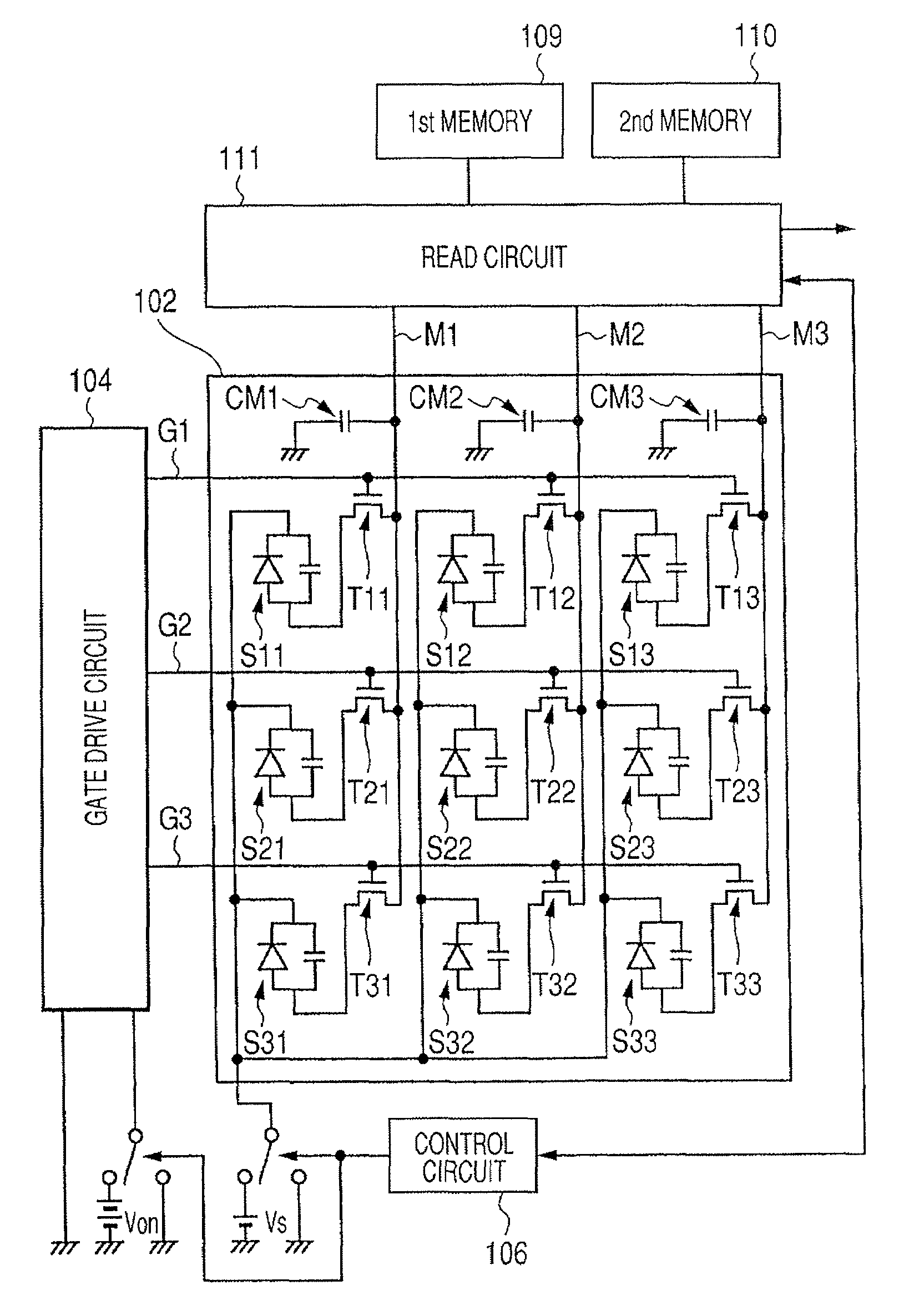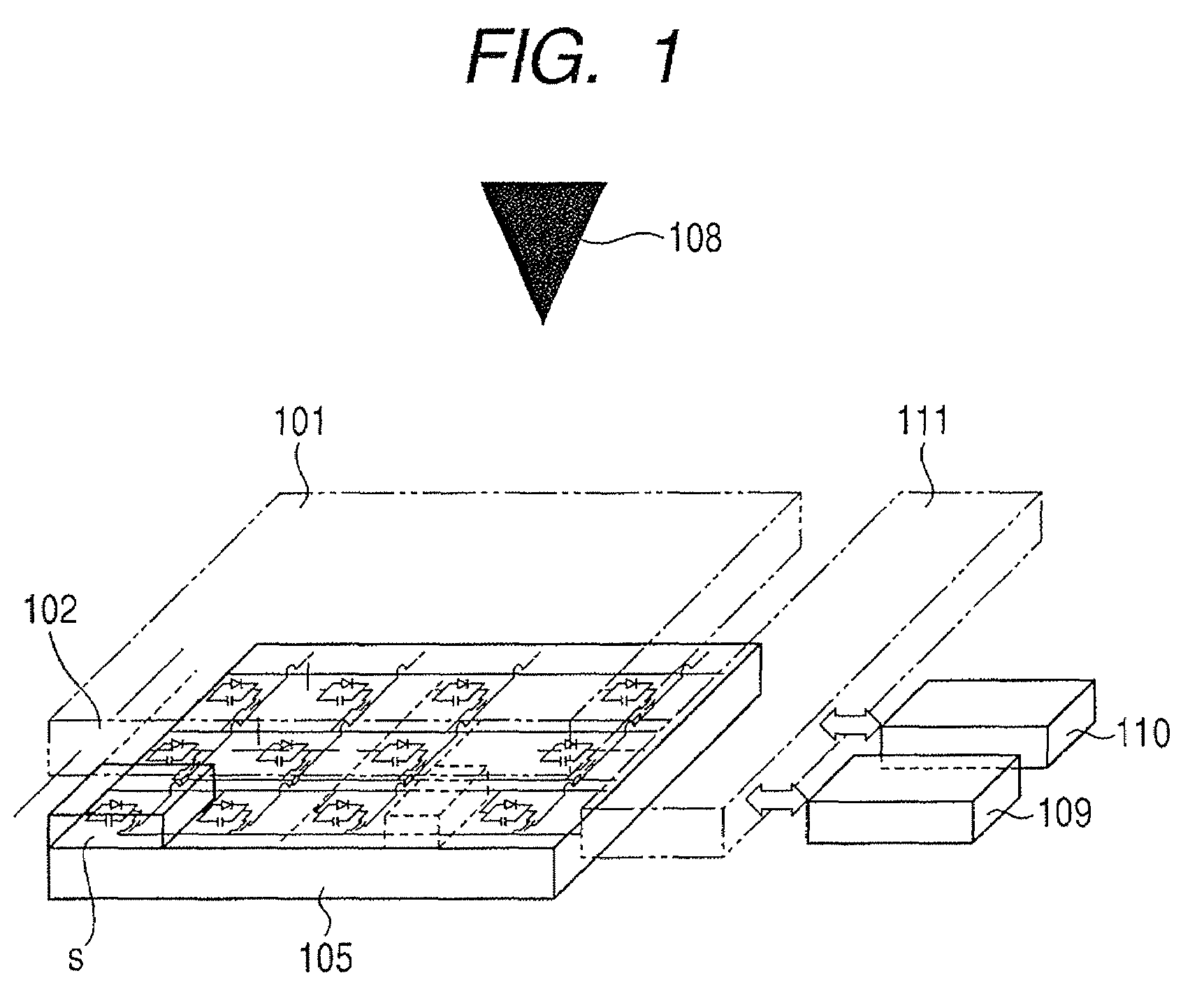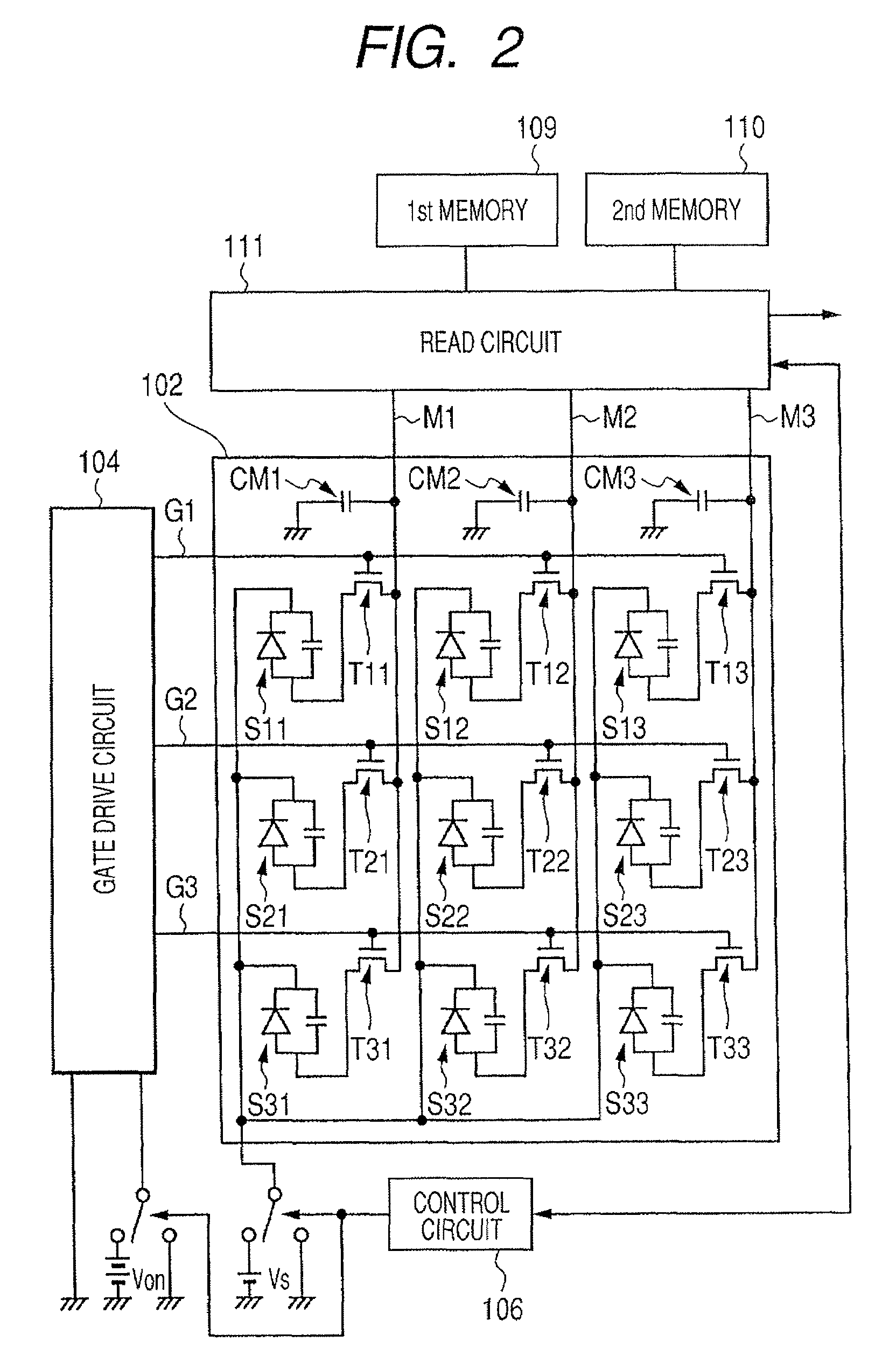Radiation imaging apparatus and radiation imaging system
a radiation imaging and apparatus technology, applied in the direction of optical radiation measurement, radiation controlled devices, instruments, etc., can solve the problems of difficult to irradiate a uniform light on the entire surface of the sensor unit, difficult to remove the effect, and non-uniform signal outpu
- Summary
- Abstract
- Description
- Claims
- Application Information
AI Technical Summary
Benefits of technology
Problems solved by technology
Method used
Image
Examples
first embodiment
[0027]Hereinafter, with reference to the drawings, a first embodiment of the present invention will be described. FIG. 1 is a view showing one example of the configuration of a radiation imaging apparatus of the present embodiment. Incidentally, in the present embodiment, description will be made with reference to the case where the radiation imaging apparatus is an FPD.
[0028]In FIG. 1, the FPD has a phosphor 101 that converts X-rays, which are one example of a type of radiation, into light. This phosphor 101 has any one of, for example, Cd2O3, Cd2O2S, and CsI as a main ingredient.
[0029]Further, the FPD has a sensor unit sensor unit 102 configured such that a plurality of photoelectric conversion elements S11 to S33 for converting light into an electrical signal are disposed in a matrix pattern on an insulating substrate having a light transmission property. Incidentally, in FIG. 2, the number of photoelectric conversion elements S provided in the sensor unit 102 is nine. However, i...
PUM
 Login to View More
Login to View More Abstract
Description
Claims
Application Information
 Login to View More
Login to View More - R&D
- Intellectual Property
- Life Sciences
- Materials
- Tech Scout
- Unparalleled Data Quality
- Higher Quality Content
- 60% Fewer Hallucinations
Browse by: Latest US Patents, China's latest patents, Technical Efficacy Thesaurus, Application Domain, Technology Topic, Popular Technical Reports.
© 2025 PatSnap. All rights reserved.Legal|Privacy policy|Modern Slavery Act Transparency Statement|Sitemap|About US| Contact US: help@patsnap.com



